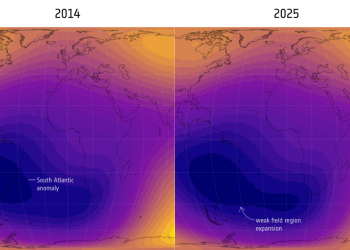A strange new phase of ice has been discovered during experiments with the world’s largest X-ray laser. Meet ice XXI, a bizarre phase that forms at room temperature, under extreme pressure.
The solidified water we’re most familiar with here on Earth is technically known as ice I, but that’s just the tip of the iceberg: for example, aliens on Neptune might drop ice XVIII into their drinks. Exposing the plain old H2In fact, different temperature and pressure conditions could give rise to more than 20 different phases of the product.
Ice XXI is the latest to join the ranks. It has a tetragonal crystal structure with fairly large repeating units consisting of 152 water molecules, which distinguishes it from all other known phases of ice.
Related: Strange ice that could form on alien planets observed for first time
Don’t expect to whip up a few fancy XXI ice cubes in your freezer at home, though. Or any type of freezer for that matter.
The researchers used a diamond anvil cell at Europe’s XFEL facility in Germany to squeeze water to pressures of up to 2 gigapascals (about 20,000 times the pressure of air at sea level) in 10 milliseconds.
They then released the pressure relatively slowly – over a quiet one-second period – before repeating the process. All the while, the X-rays captured a million frames per second to see how the crystal structure changes.
It turns out that Ice XXI is one of several possible intermediate stops on the water’s path to an exotic phase known as Ice VI.
“Using unique X-ray pulses from the European XFEL, we discovered several crystallization pathways in H2O, which was rapidly compressed and decompressed more than 1,000 times using a diamond anvil dynamic cell,” says Geun Woo Lee, a physicist at the Korea Standards and Science Research Institute.
The researchers say the discovery of ice XXI suggests that other previously unknown ice phases could exist on icy moons and planets.
The research was published in the journal Natural materials.









